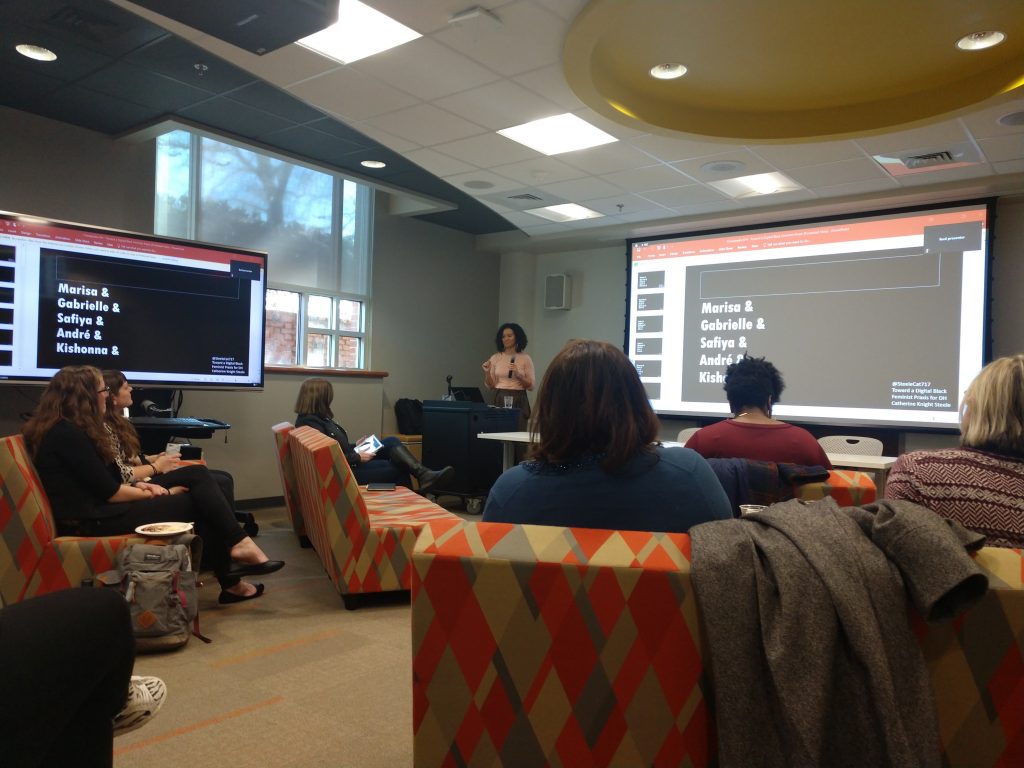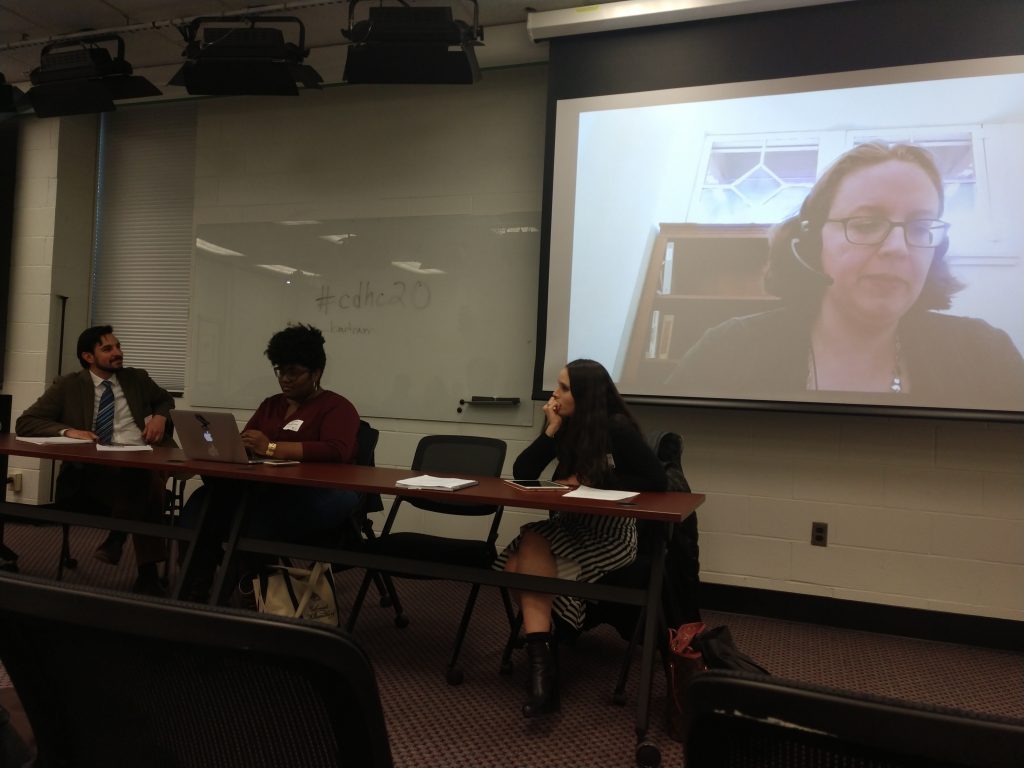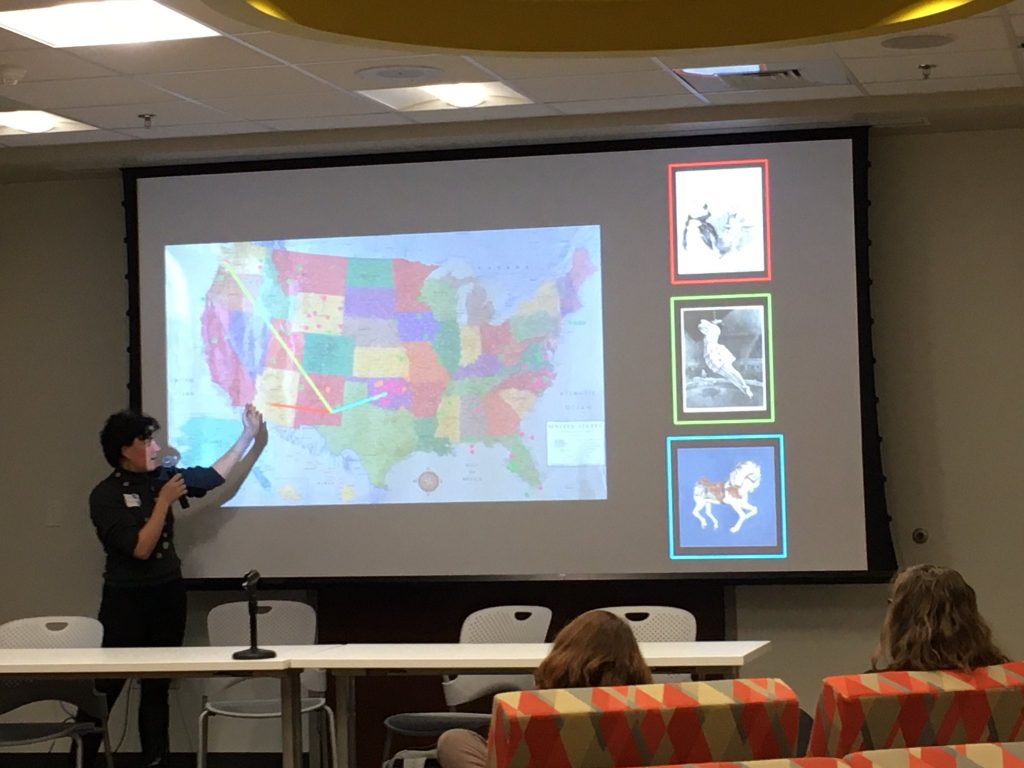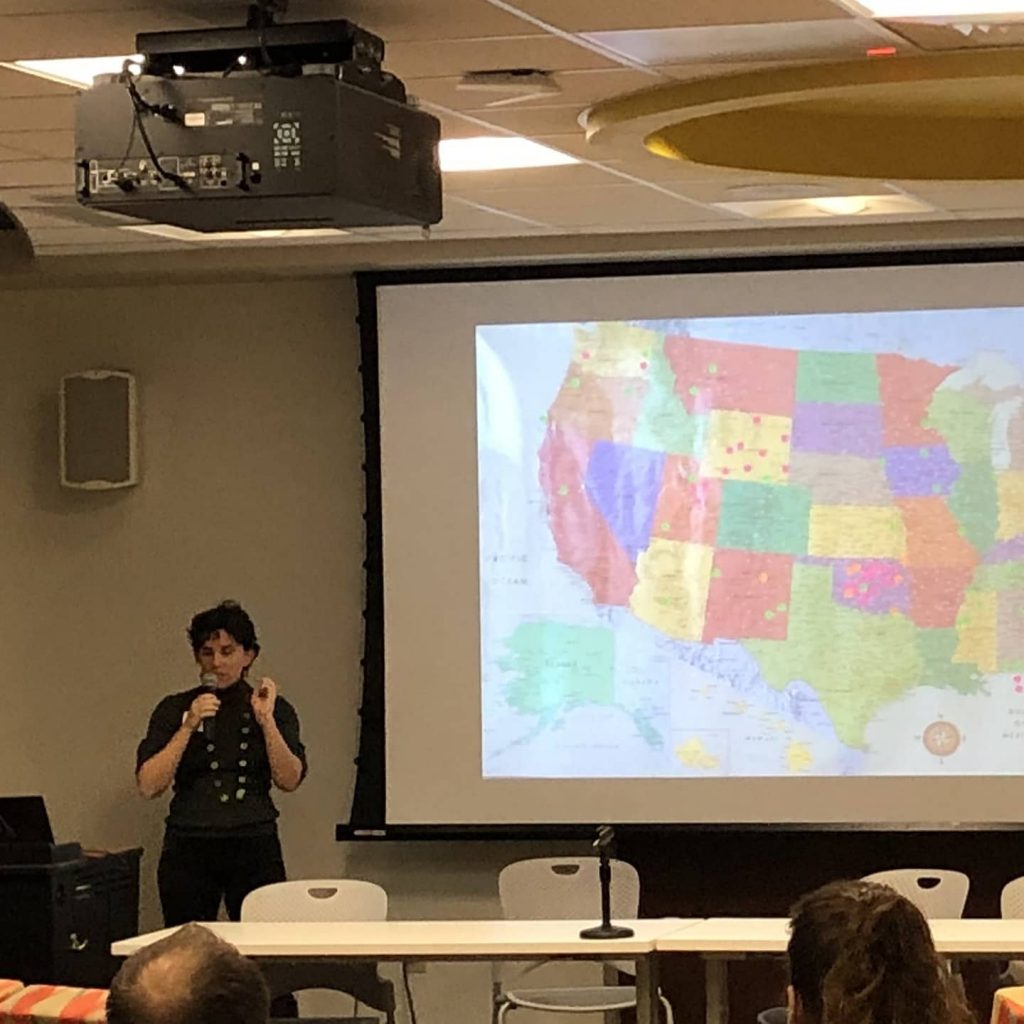When it comes to my digital humanities work, I’ve learned that I’m most likely to follow through with my aspirations when I assign myself deadlines and hold myself accountable to others. During my first semester, for example, I took a class on DH that required completing a substantial project, an undertaking that became my Scalar book. During the winter break, I took a week-long workshop in order to learn the basics of Python. One of my reading lists for comprehensive exams includes several seminal theoretical texts on the digital humanities. And most recently, on February 21st I participated in the first annual Symposium for the Chesapeake Digital Humanities Consortium, or CHDC.

The CDHC is a new organization intended to bring together digital humanists from around the Chesapeake region. All too often, we academics tend to feel isolated working at our respective institutions, and forget that there are numerous other professionals out there with similar ideas or ambitions. The CDHC and other groups like it offer an opportunity for DH scholars from various colleges and universities to come together, share their work, and discover new opportunities for collaboration. As an emerging digital humanist myself, I appreciate being able to join organizations that provide the chance to meet new people and expand my professional network.
Conveniently for me, the CDHC decided to hold its first symposium right at William and Mary, so unlike other conferences I’ve attended, I didn’t have to travel very far. Throughout the afternoon, I had the opportunity to learn about a wonderful array of digital projects, from Paul Martin’s study of the use of historiography in video games, to Liz Losh’s analysis of the use of emojis in Donald Trump’s tweets. While their work is very different from what I study, I appreciated being able to learn how they used DH to produce meaningful scholarly inquiries.
The highlight of the afternoon was the keynote speech from Dr. Catherine Knight Steele, a scholar who focuses on Black Digital Feminism (for a more detailed analysis of Dr. Steele’s talk, visit my colleague Ravynn Stringfield’s blog, Black Girl Does Grad School). Over the course of her talk, she shared key principles from her practice that could be applied to digital humanities as a field, including an emphasis on praxis over product, focusing on people rather than tools, and the importance of adhering to principles that emphasize an ethical digital scholarly practice. Of particular significance to her talk was the significance of slow, meaningful work, and the willingness to take the time to reflect on your practice and ways to improve it. Acknowledging the labor of all participants, and empowering them to take credit in a way that suits them best, was another key part of her address. Her emphasis on praxis especially resonated with me. When you always feel pressured to show results for your work, it’s important to remember that the means are at least as significant as the ends, and that sometimes it’s better to diminish output in order to concentrate on mindful scholarly practices.

Another highlight of the conference was being able to learn more about the work of my fellow cohorts at William and Mary, with one standout session focusing on the use of digital scholarship outside of the academy. Erin Bartram highlighted her work on Contingent, a magazine dedicated to publishing and paying underrepresented scholars such as graduate students or adjuncts. Ravynn Stringfield talked about her blog, Black Girl Does Grad School, and the importance of blogging for black women scholars as both a retreat from, and resistance to, barriers within the academy. Laura Beltran-Rubio highlighted her work as a fashion scholar on Instagram, which developed out of her teaching experiences in Colombia and her desire to make Spanish-language resources on fashion history available to wider audiences. Christopher Slaby focused on his experiences as a historian on Twitter and its potential for engaging in scholarly debates with both other academics and other audiences.
What I appreciated about this panel is the emphasis all the speakers placed on media projects outside the academy as work. Far from a distraction from scholarly endeavors, social media and other platforms can be a powerful way to reach audiences outside the academy. As such, it demands significant labor with regard to both the production of quality content and the cultivation of an online persona. I’ve never been especially proficient at using social media to advance my own scholarly work, but as a curator, I do believe in the importance of engaging audiences outside of the academy. It was inspiring, then, to see how these scholars use these platforms to extend their academic practices. Moving forward, I’ll remember the work my colleagues do as I think about using my own accounts more effectively.

I also had the opportunity to introduce my own work, or rather my aspirations for a future project. During a five-minute lightning talk, I shared my desire to map out the Federal Community Art Center Project with the intention of highlighting the networks established through the sharing of exhibitions. Using an image of a map in my study as a springboard, I speculated about the advantages of setting the art center project to an animation that would enable viewers to follow the project chronologically, allowing them to see when exactly art centers opened or closed. I also discussed how I’d like to have visitors be able to click on individual sites and learn information such as when they opened, closed, which exhibitions they hosted, and who worked there. Finally, I talked about how I thought a digital platform would be an effective means to map out the actual travel routes of exhibitions, and to see how those routes contributed to different communication networks among the art centers. Through all these methods, I emphasized that a digital project could effectively evoke the dynamism of the Community Art Center Project.
This was a good experience for me. I’m not used to sharing speculative research when I present at conferences, but it was a great way to test out my ideas, and better yet, get good feedback for moving forward. One attendee, Marie Pellissier, was especially helpful in that she recommended Omeka as a potential platform. While I was aware of its effectiveness as a site for object-based online exhibitions, I didn’t know that it also has powerful mapping capabilities. Since I already have access to Omeka through Reclaim Hosting, I can start experimenting with it as soon as I’ve taken care of exams.
Overall, this was a great experience. I got to meet a lot of interesting people, learn about some great projects, get suggestions for my own work, and overall think about the significance of developing a mindful, ethical scholarly practice. I’m glad I attended, and I look forward to staying involved with this group.

